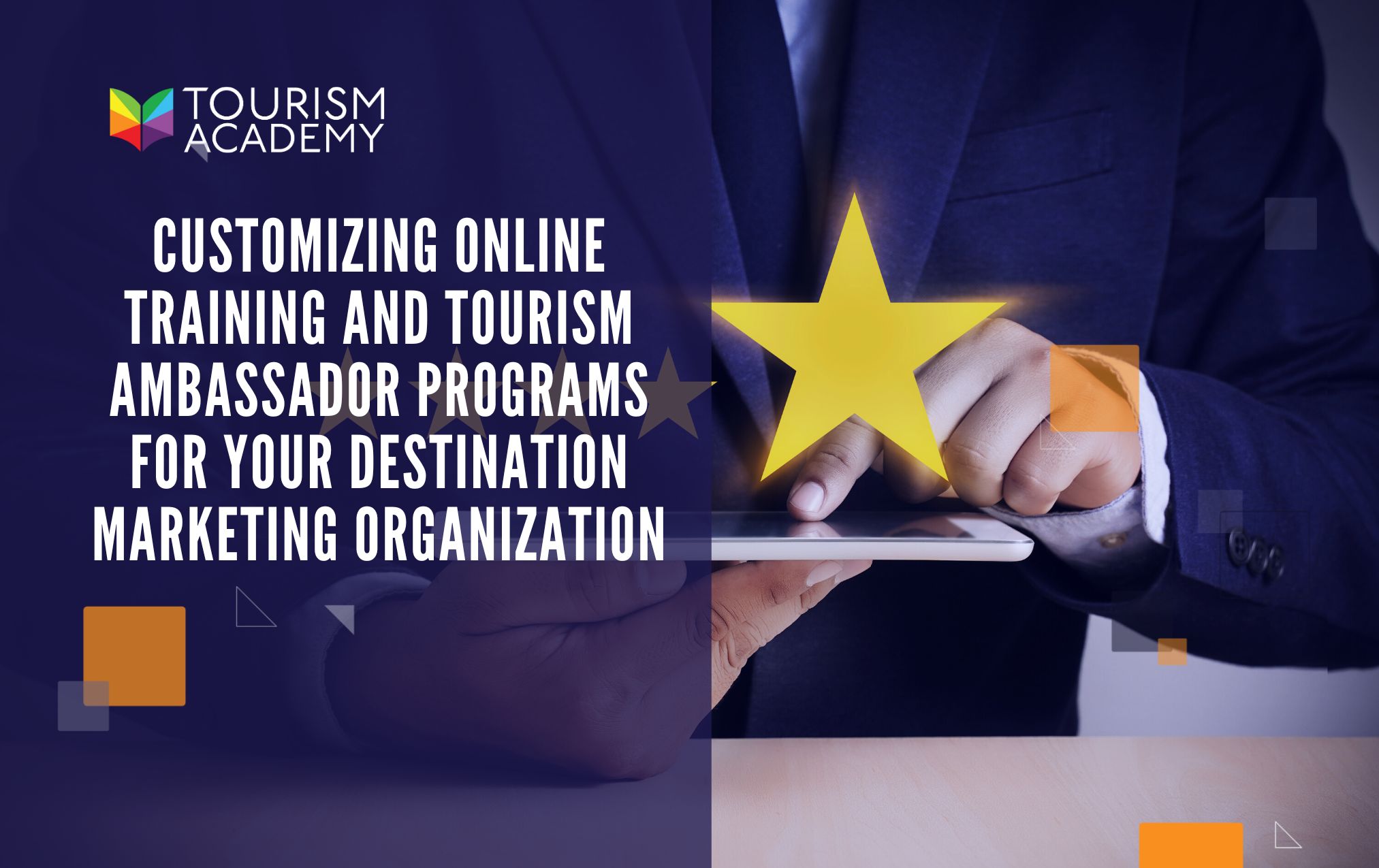
Customizing Online Training and Tourism Ambassador Programs for Your Destination Marketing Organization
Destination Marketing Organizations (DMOs) play a crucial role in promoting and enhancing the image of their regions. An integral part of their success lies in training tourism ambassadors and staff to represent their brand and voice. This article will explore tips to help DMOs customize their online training and tourism ambassador programs to align with their unique brand, voice, and audience.
-
Understand Your Brand and Voice:
- Define Your Brand: Clearly define your destination's brand, values, and unique selling points. What makes your destination special? Your training materials should reflect these core aspects.
- Consistent Voice: Ensure that your training materials and communication consistently use the tone, language, and messaging that align with your destination's voice. Consistency is critical to building a solid brand identity.
-
Tailor Content to Your Audience:
- Audience Segmentation: Identify your target audience for tourism ambassador programs. Consider tourists, locals, or specific niches. Tailor your content to cater to the interests and needs of each group.
- Language and Culture: If your destination attracts international visitors, provide training in multiple languages and consider cultural nuances in your content.
-
Embrace Technology:
- Interactive Platforms: Use interactive e-learning platforms and tools to engage trainees effectively. Incorporate quizzes, videos, and gamified elements to make learning more enjoyable.
- Mobile-Friendly: Ensure that your online training is accessible on mobile devices. Travelers often use smartphones for quick information access.
-
Focus on Sustainability and Responsible Tourism:
- Promote Sustainable Practices: Incorporate training on sustainable and responsible tourism. Educate your tourism ambassadors on eco-friendly practices and cultural sensitivity.
- Showcase Local Communities: Highlight the importance of engaging with local communities and promoting ethical tourism.
-
Utilize Real Stories and Experiences:
- Testimonials and Case Studies: Share real stories and experiences from tourists, locals, and past tourism ambassadors. This helps in humanizing your destination and creating a sense of connection.
- Incorporate Personal Narratives: Encourage trainees to share their experiences and ideas during the training, fostering a sense of authenticity.
-
Stay Updated:
- Ever-evolving content: The tourism industry is dynamic. Regularly update your training materials to keep them relevant and aligned with the latest trends and developments.
- Industry Insights: Encourage your trainees to stay informed about industry news and trends. This ensures they can provide up-to-date information to visitors.
-
Foster a Culture of Learning:
- Ongoing Training: Implement continuous learning and development opportunities for your tourism ambassadors. This shows your commitment to their growth and helps in retaining talent.
- Feedback Mechanism: Create a feedback loop where trainees can provide insights, suggestions, and report on their experiences. This helps in refining your training programs.
Conclusion: Customizing your online training and tourism ambassador programs is fundamental in aligning them with your DMO's brand, voice, and audience. By understanding your brand, focusing on your audience, embracing technology, promoting sustainability, and staying updated, you can create a compelling and effective training program that represents your destination and provides a memorable experience for visitors. Remember, when one teaches, two learn, and your tourism ambassadors will carry your destination's story to the world with authenticity and pride.

Leave a comment